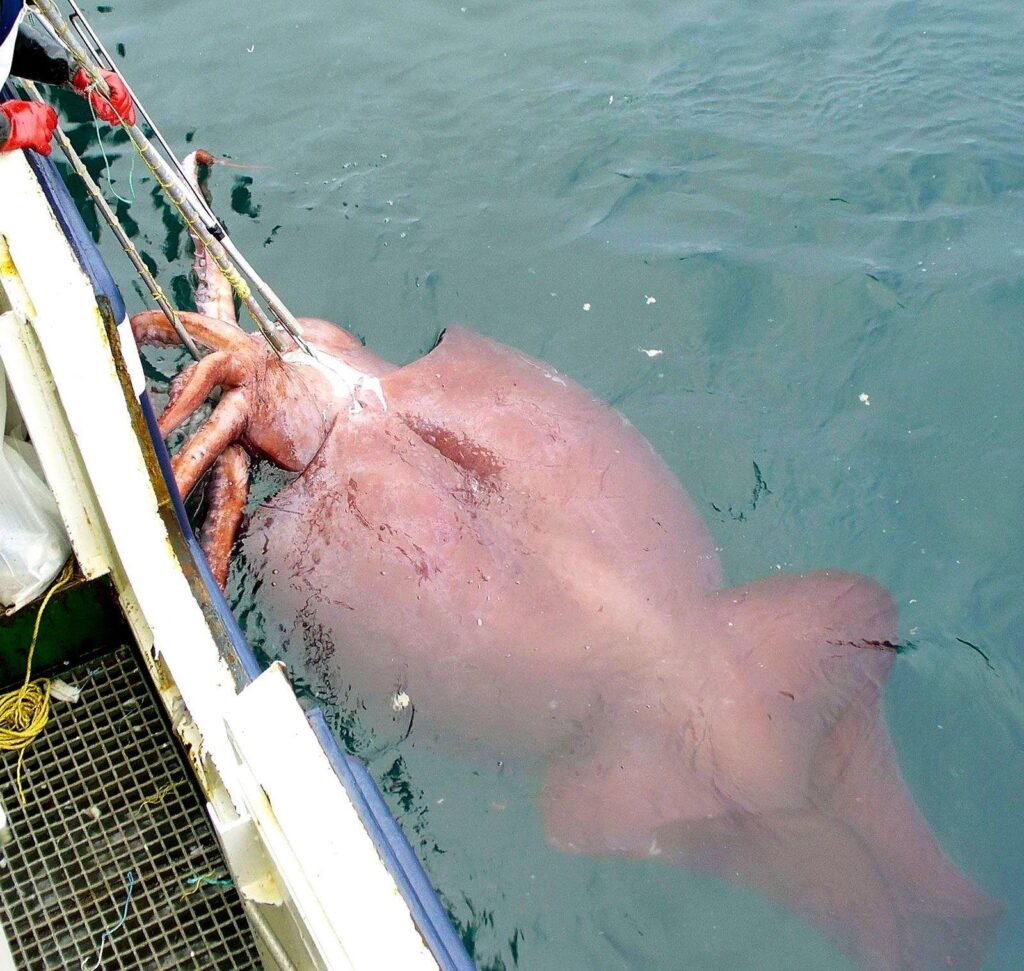Unveiling the Colossal Squid: A New Era in Marine Exploration
In a remarkable advancement for marine science, researchers have achieved the unprecedented feat of capturing footage of the elusive colossal squid in its natural environment. This significant milestone, highlighted by the American Association for the Advancement of Science (AAAS), provides fresh insights into one of the ocean’s most enigmatic inhabitants, which has been primarily understood through folklore and scientific conjecture. The colossal squid, known for its massive size and deep-sea habitat, has captivated both scientists and enthusiasts alike as it represents one of the final frontiers in underwater research. This newly acquired footage not only offers an extraordinary view into this mysterious cephalopod’s life but also prompts further inquiries regarding its behavior, ecological role, and deep-sea surroundings. As scientists analyze this groundbreaking discovery, it signifies a pivotal moment in enhancing our comprehension of marine biodiversity and highlights urgent conservation challenges facing these underwater ecosystems.
Colossal Squid Footage: A Revolution in Marine Science
For the first time ever, researchers have successfully recorded breathtaking visuals of the elusive colossal squid within its natural habitat—a landmark achievement that propels marine biology forward. This extraordinary discovery was made possible thanks to cutting-edge deep-sea exploration technologies that enabled scientists to reach depths where these giants reside. The captured footage not only showcases their impressive size but also reveals unique behaviors that had previously remained speculative at best. These findings are set to deepen our understanding of their ecological significance while paving new paths for future research.
The video documentation unveiled several noteworthy behaviors:
- Hunting Techniques: The colossal squid demonstrated intriguing predatory strategies by using its elongated tentacles to capture prey effectively.
- Bioluminescent Displays: Striking bioluminescence was observed during filming, indicating potential methods for communication or hunting tactics.
- Diversity in Size: The footage provided tangible evidence regarding variations in size among individual squids—insights crucial for understanding their growth patterns and life cycles.
| Observation Type | Details Observed |
|---|---|
| Hunting Behavior | Tentacle-based ambush techniques |
| Communication Methods | Utilization of bioluminescent signals |
Discoveries from Footage: Insights into Deep Ocean Ecosystems from Colossal Squid Observations
The recent recordings featuring the colossal squid reveal not just their existence but also highlight their integral role within deep-sea ecosystems. Researchers noted remarkable behaviors that shed light on how these elusive giants navigate daily life beneath oceanic depths. For instance, they showcased agile hunting techniques utilizing long tentacles to surprise prey effectively while displaying intricate body patterns—potentially serving as communication or camouflage mechanisms—demonstrating complex interactions with their environment.
This unprecedented observation opens doors to further exploration concerning deep-sea biodiversity beyond just squids themselves—the footage hints at a vibrant ecosystem brimming with diverse life forms. Notable species spotted alongside include various types of deep-water fish and gelatinous organisms indicative of an intricate food web still largely uncharted by science today:
| Species Name | Ecosystem Role |
|---|---|
| Giant Squid | Apex predator within its niche ecosystem. |
| Cassiopeia Jellyfish (Upside-down Jellyfish) | Mainly feeds on planktonic organisms. |
The implications derived from these observations are profound since comprehending behavioral dynamics among such creatures can provide valuable insights into assessing overall health within deep-sea habitats. The delicate interplay between species at such extreme depths emphasizes an urgent need for conservation initiatives aimed at protecting these vital ecosystems as technological advancements continue facilitating deeper explorations into our oceans’ mysteries.
Conservation Strategies for Deep Ocean Habitats – Protecting Our Giants!
The excitement surrounding this groundbreaking visual documentation underscores an increasing urgency towards safeguarding fragile ocean environments inhabited by majestic creatures like colossal squids! To ensure both survival prospects not only apply here but extend across numerous species residing below sea levels requires immediate action through effective conservation measures including:
- Create Marine Protected Areas (MPAs): Designate essential habitats where human activities face restrictions ensuring biodiversity preservation .
- Adopt Sustainable Fishing Practices : strong >Regulate fishing methods preventing overexploitation reducing incidental catch along with habitat degradation . li >
- < strong >Enhance Research & Monitoring Efforts : Increase scientific expeditions gathering data promoting awareness informing policy decisions . < / li >
- < strong >Encourage International Collaboration : Foster agreements addressing transboundary issues enhancing global conservation efforts . < / li > ul >
Moreover , engaging local communities stakeholders significantly strengthens ongoing initiatives aimed towards preserving delicate ecosystems . Public awareness campaigns emphasizing importance associated with maintaining healthy aquatic environments cultivate stewardship amongst citizens encouraging proactive involvement ! Below is a table outlining potential outreach programs designed specifically targeting community engagement :
Program Title th > Description < / th > Target Audience < / th > tr > head > Deep Sea Discovery Initiative < / td > A series hands-on workshops educating participants about fascinating aspects related directly towards exploring unique features found exclusively beneath waves ! < / td > Youths Educators < / td > tr > “Ocean Guardians” Project < / td > A grassroots movement empowering fishermen adopt sustainable practices ensuring long-term viability fisheries resources available locally !
&nbps;
&nbps;
&nbps;
&nbps;
&nbps;
&nbps;
</body>
